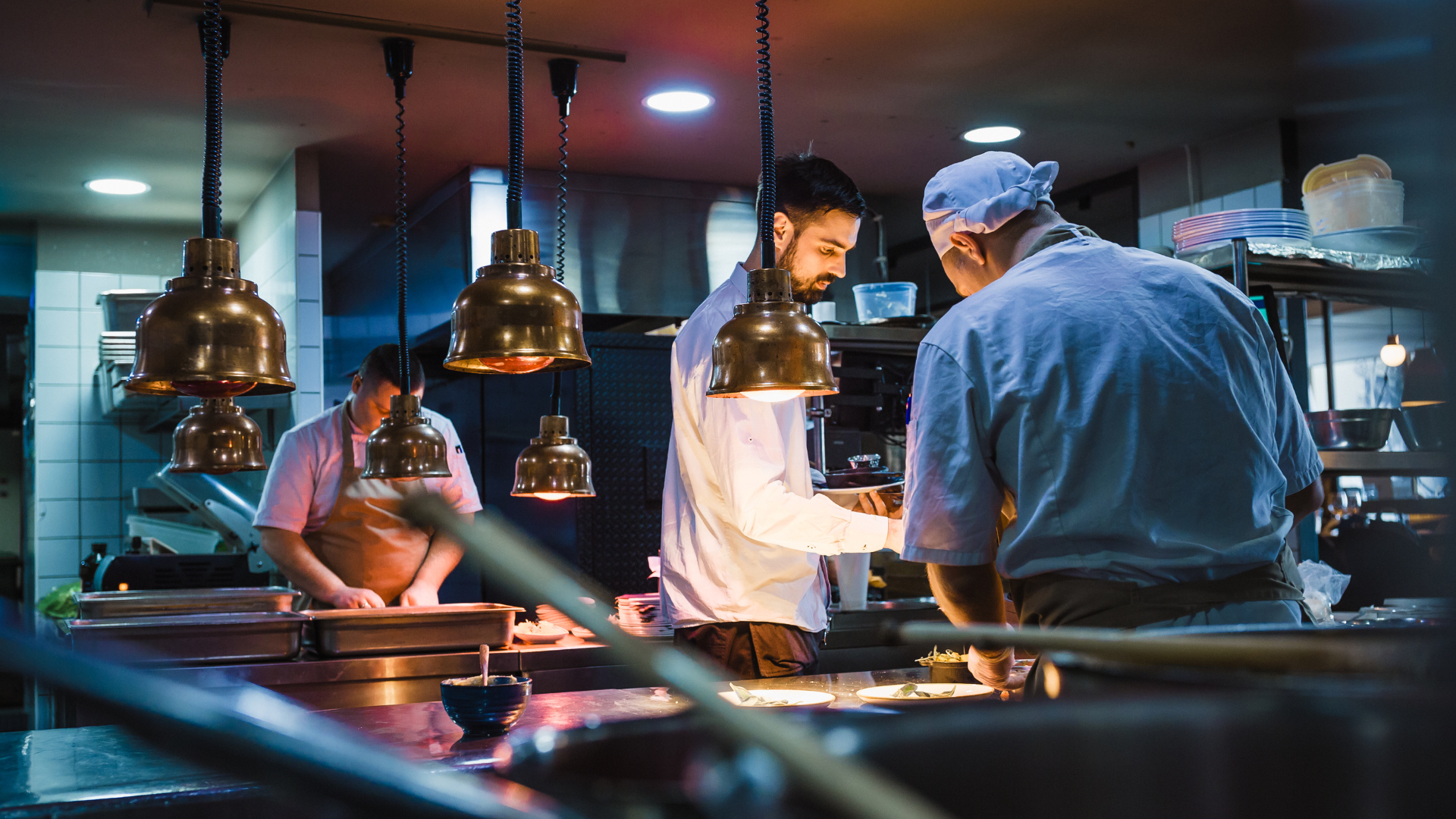Growth is one of the major goals of any restaurant business. One of the best ways to achieve this is to open additional venues to expand your brand and find new customers in new locations.
In fact, ResDiary’s Beyond the Booking report on hospitality trends suggests that over 29% of Australian and New Zealand venue operators are considering opening an additional venue in 2025, while 17% say they definitely will. In the UK and Ireland, 17% of respondents are considering opening a new location while 11% said they’re committed to opening one.
However, managing multiple restaurants at once creates specific issues that need long-term solutions. In this guide, we’ll break down the challenges of managing multiple restaurants and how to do so effectively.
What are the challenges of managing multiple restaurants?
Some of the major challenges of managing multiple restaurants include:
- Time management: Managers need enough time to effectively direct the daily operations of each venue in the business. With poor management, performance and service quality may deteriorate. This can result in unsatisfied customers, slow workflows and costly mistakes.
- Brand identity: Once a business has opened multiple venues, it needs to determine if each restaurant in the chain will share its restaurant brand identity, or offer something different per location. Once this decision on brand identity has been made, it will also need to be properly rolled out across each establishment to maintain consistency.

- Operational and logistics challenges: Managing multiple restaurants means controlling the daily logistics and operations of each site separately. This includes everything from ensuring inventory is properly stocked to effective reservation management. ResDiary’s booking and table management system is tailored to handle multiple locations. We provide smart solutions to reduce admin time and streamline operations across multiple premises.
- Financial management: It can be challenging to manage the finances of multiple premises at once. You’ll need to ensure that each of your locations are generating enough revenue to operate sustainably. If one establishment is a financial drain on your business, you’ll need to focus on improving profitability in that venue.
- Maintaining safety standards: It is vital that all locations in a brand stick to proper health and safety regulations. If one venue is neglected or not properly maintained, health standards could drop. This could result in hefty fines and can greatly affect bookings and customer satisfaction. A reputation for poor health and safety standards may also spread to other locations.
How to successfully manage multiple restaurants: 10 tips
Here are 10 tips to help you navigate the challenges that come with managing multiple restaurant locations.
1. Planning and strategy
It is crucial to have a solid business and financial strategy in place before committing to restaurant expansion. With improper planning, you could be taking unnecessary risks and hurting your eventual profits. Precisely planning and strategising for managing multiple restaurant sites involves:
- Strong business plan: A business plan is a document that describes the key concepts and unique appeals of your business. It also includes an analysis of the general market and an outline of your restaurant's financial projections. With a strong business plan, you and your staff are aligned on the goals and purpose of your new premises. You’ll also develop a better understanding of the surrounding market, allowing you to tailor your offerings accordingly.
- Business model: You may want to craft a distinct experience at each new restaurant, or ensure your overall brand offers a highly unified atmosphere. Whatever you choose, your entire team must be on the same page when it comes to the customer experience.
- Unified KPIs: You should develop comprehensive restaurant key performance indicators (KPIs) to measure your success and ensure everyone is working towards the same goal, no matter the location. KPIs help you to keep your business on track with transparent financial goals, and communicate the most important metrics for success. A restaurant forecast will also ensure you have oversight into the long-term performance of your locations.
2. Hire a great team
Effectively operating multiple venues at once will require a competent team capable of following your brand’s standard operating procedures and managing daily tasks.
To find the best staff possible, your hiring process should be thorough and clearly outline expectations and required skills. Ensure your job ad is high quality, represents your staffing needs, and clearly communicates the personality and values of your brand. This helps to ensure you can find compatible employees easily.
Check out some of our sample job descriptions if you need inspiration for your own job ads.
Before you meet face-to-face with any potential employees, ensure you have relevant and precise interview questions that communicate the exact demands of the role. Every question must have a specific aim, and you should have a logical expectation of what a good answer for your business is. 
3. Create standard operating procedures (SOPs)
Unified standard operating procedures can seriously help multiple venues under singular management thrive. They allow restaurant owners and managers to streamline vital operations across each business. Useful SOPS for a brand with multiple branches include:
- Front and back-of-house prep: SOPs for front-of-house staff may cover service preparation and guest greetings. For back-of-house staff, SOPs should include checking menu stock, cleaning equipment, and proper food handling instructions.
- Cleaning tasks: Create a list of items and areas that need to be cleaned to ensure your location always looks presentable. Areas to focus on include visible surfaces, digital screens, entryways, and furniture. Back-of-house staff should create a list of food contact surfaces and crucial areas to be regularly sanitised.
- Handling customer complaints: Having SOPs for customer complaints can help staff feel less stressed about any potential conflicts. It ensures your brand's image and customer relations are consistent across venues.
- Inventory management: With comprehensive inventory management SOPs, staff can ensure similar items (such as meat or produce) are grouped for easier tracking. You can also make sure that daily inventory is coming on a consistent, regular schedule, and that employees are maintaining a food waste log to track spoilage and remove expired items.
By using a quality checklist app like Trail, your team has uniform checklists of priorities and health and safety requirements across multiple venues. It can easily be used across your locations, offering complete control and oversight of standards in your business.
4. Centralise reservation management
To run multiple venues at once, you will need a centralised reservation management system with features built for multi-site businesses. A solid central reservation management system features:
- Excellent reservation management: ResDiary offers a wide range of reservation management features to help your business operate more smoothly. You can automatically control the flow of bookings through smart rules, and visualise your reservations with a range of different table plan views.
- Multi-site functionality: ResDiary has special features built for restaurant groups. 0% commission fees and cloud functionality make it the perfect system for managing multiple locations.
- Easily accessible booking data: Quality restaurant reservation software makes it easy for your whole team to access booking data and offer excellent service using it. You can also gain central oversight into booking data across your venues with ResDiary.
- Booking channel integration: A modern booking reservation system will enable your customers to book through more channels than just your restaurant's website. With ResDiary’s integrations, guests can book a reservation from platforms like Instagram, Facebook, Reserve With Google, and the likes of DesignMyNight, Quandoo, and Restaurant Hub.
5. Take advantage of cross-selling
Having multi-location restaurants presents a unique and profitable opportunity for cross-selling. Through cross-selling, if a diner’s preferred reservation time is unavailable, you can offer them the time they prefer at a different location.
This means you won’t miss out on valuable business as you can ensure each of your sites is receiving enough traffic to turn a profit across your business, instead of only relying on your more popular restaurant locations.
ResDiary’s Cross-Sell Widget captures your customers’ preferred booking date, their group size and their desired time slot, and presents alternative venues in your business that meet their preferences when their chosen location isn’t available. This makes it easier to capture more reservations within your brand.
6. Streamline inventory management
Managing inventory is crucial at any restaurant. Proper inventory management optimises the daily operations of your back-of-the-house staff and ensures your business is throwing out any expired produce, keeping you in line with health and safety regulations.
By optimising your inventory management process, you are improving overall daily operations across your brand, reducing total costs and preventing costly bottlenecks from forming.
ResDiary’s quality EPOS system integrations like PowerEPOS from Triniteq or AccessEPoS can be used to help staff track the inventory status of menu items. You can combine your sales data with booking data to more accurately understand your inventory needs.
7. Use a unified tech stack
Using a unified tech stack to oversee multiple restaurants at once gives you the tools and integrations you need for oversight over each of your venues. This makes management easier and helps you see better results.
With quality reservation management software and a wide array of integrations, ResDiary is an excellent linchpin for your tech stack. A unified tech stack with ResDiary gives your business:
- Accessible table management software: Table management software like ResDiary is designed to manage multiple venues at once with accessible and easy-to-understand features. Quality table management software functions across many different premises with a consistent interface and user experience.
- EPOS software: By using integrated EPOS software, such as AccessEPoS or PowerEPOS, you can more efficiently operate multiple venues. You can take advantage of two-way data flow for smoother operations. Plus, when you use the same tools across different venues, your team can work in various locations while still being familiar with your software.
- Marketing features: Using ResDiary’s built-in email marketing features enables you to send confirmation emails and automated follow-up messages directly to your patrons after they’ve dined with you. This helps to build strong customer relationships and encourage more reviews. Thanks to ResDiary’s Google and Meta integrations, customers are also able to directly book a table from your social media profiles, cutting down time they may spend considering competitors.
- Centralised safety management: By using a checklist app like Trail across multiple businesses, you can rest assured that your team has uniform systems in place to manage food safety and much more.
- Staff rota management: Simplify your staffing management process to cut down on scheduling and admin tasks with ResDiary’s Rotaready integration. With Rotaready, you can control your financial performance and expected labour costs for more precise budgeting, and monitor staff attendance across each of your locations. Integrating the system with ResDiary allows you to incorporate your booking data for better oversight.
8. Prioritise the customer experience
You must offer a great customer experience across all your premises to maximise the chances of success for your business. When your diners have a good meal at one of your restaurants, it will increase the reputation and value of your brand as a whole.
A great way to improve your brand's customer experience is to streamline your daily operations, giving your staff more time to focus on customer needs. Comparatively, with a pen and paper booking diary, staff may take too much time to create and find reservations. This may end up disrupting the workflow of other team members.
By using table management software, you can move your staff away from costly pen-and-paper systems and automate admin tasks. By streamlining your operations, you will give your staff more time to focus on crafting an exceptional customer experience and improving your brand's reputation.
9. Communicate effectively
Senior staff from each restaurant in your portfolio must be able to effectively communicate with upper management and each other to keep each establishment running smoothly. Effective internal communication will also ensure a consistent brand experience across multiple premises.
High-quality communication can be encouraged by using centralised management software. If each location uses different software, sharing important updates across the brand may be difficult. Important areas such as inventory and staff management may not be effectively communicated, causing misalignment and confusion.
Tools like ResDiary and Rotaready are designed to meet the needs of restaurant brands with multiple locations. With a single system capable of segmenting each restaurant branch separately, ResDiary can facilitate excellent communication and allow staff to share data between locations for better general oversight.
10. Make data-driven decisions
When running multiple venues, you need objective, proven facts and insights to determine how to improve your business. This involves understanding what is most appealing about your brand and exactly what parts of your restaurant group could be improved.
Without clear insights, any adjustments or changes to your business have unnecessary risks that could affect your business’ performance.
With unified tech stacks and management systems, each booking or payment can be easily registered and transferred into actionable data you can use to improve your business. By analysing data like booking times or the most popular items on your menu, you can optimise your business and improve your total revenue.
Using ResDiary’s analytics suite, you can effectively explore all of your data to draw out the most important insights. For more information, check out our complete guide to restaurant analytics.
Make multi-site management a breeze with ResDiary
ResDiary’s table management software and quality integrations can easily and efficiently oversee multiple restaurants at once. Our system was built to meet the needs of restaurant groups with flexible and smart solutions that can be applied across your entire brand.
ResDiary offers a high-quality centralised managing system as versatile as it is easy to use. Using our built-in features and integrations, you can cut down on costly, time-consuming operation tasks and streamline your admin process across all your venues for more efficient man
Manage your restaurant portfolio with effective solutions today by booking a demo with ResDiary.







